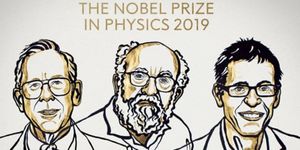Learning More About the Basis of a Woman's Biological Clock
Most women know that their fertility begins to decline as they age. Now researchers are learning more about the physiological reasons for that change. After assessing about 3,000 egg cells collected from ladies between the ages of nine and 43, they’ve found that naturally occurring errors in chromosomes have a significant impact on female fertility, and those errors depend on age. The findings have been reported in Science.
“We have known for a long time that we humans have a unique fertility curve compared to many other species. The curve starts out very poorly in the teenage years and starts to go downhill again when women reach their thirties. But until now, we have not known what is actually causing these changes,” said Professor Eva Hoffmann, the Head of Research at the Department of Cellular and Molecular Medicine of the University of Copenhagen.
Women are born with all of the eggs they will ever have (unlike men who produce new sperm after puberty and then throughout life). A girl’s eggs are not fully mature, however, until her menstrual cycle starts.
“While the eggs lie dormant, a kind of molecular glue will make the chromosomes stick together. Later, when the eggs are maturing, the chromosomes divide. But the older the women become, the greater the risk that the glue will break down prematurely,” Hoffmann explained.
Chromosome errors start to happen as this hereditary material is disrupted, and has the potential to lead to birth defects like Down, Klinefelter, or Turner syndromes. It can also cause infertility.
Problems with chromosomes were also found in teens. While eggs mature during that time, they may not reach full maturity. In adolescence, chromosomes, especially larger ones, begin to develop defects, which increases the odds that the body will expel the eggs, and they won’t be fertilized.
The eggs became healthier in younger women after the teen years, and the chromosome errors began to fade away over time, which continued into women’s late twenties. Other kinds of chromosomal abnormalities then began to appear. More work will be needed to determine why fertility rises and peaks, then falls within certain age ranges.
Our closest evolutionary relative, chimpanzees, don’t experience similar changes; they are consistently fertile throughout adulthood. In humans, Hoffman suggested, girls are protected from the dangers of childbirth before they’re fully developed. For example, they shouldn’t give birth before their hips have widened enough. Humans may also benefit from the help of older women who can assist with raising children because they’re not busy with kids of their own. In some fields of study this is known as the ‘grandmother hypothesis.’
This research may help improve fertility treatments, and expand our understanding of miscarriage.
“Pregnancy loss is still a taboo, but with knowledge like this, we are able to better understand and demonstrate that it is a natural thing. At the same time, a greater understanding of the mechanisms behind our biological clock may enable us to better control the breakdown of the eggs - either in the eggs themselves or in the maturation process in the fertility clinic,” added Hoffmann.
Sources: AAAS/Eurekalert! via University of Copenhagen The Faculty of Health and Medical Sciences, Science









